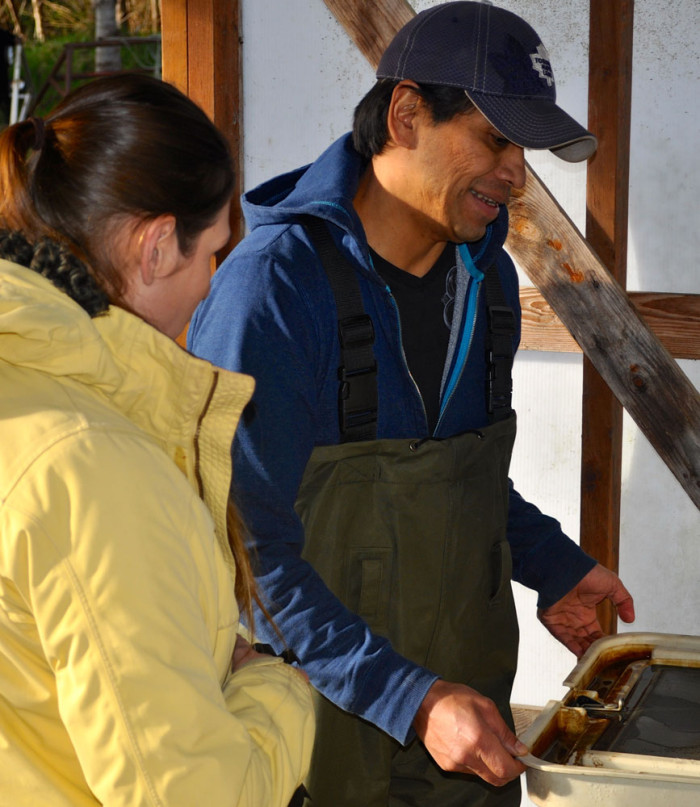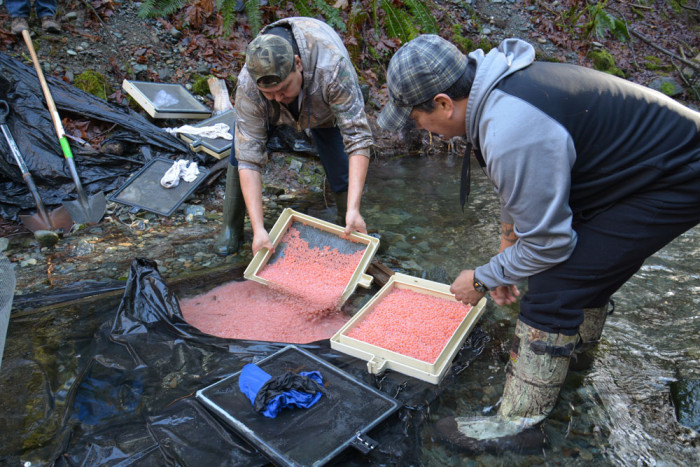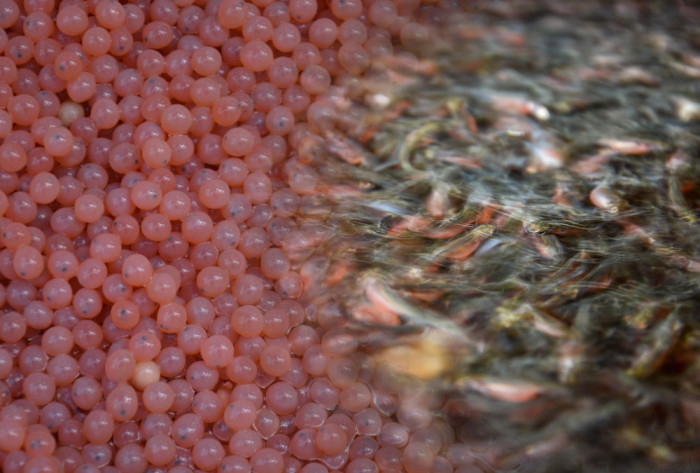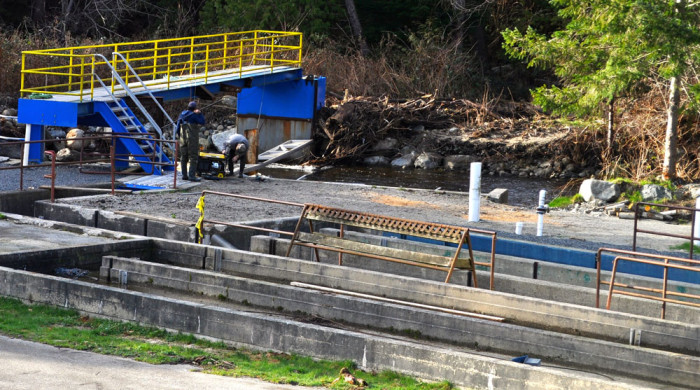Of Salmon Eggs, Brood stock and Floods
by Tricia Thomas
Many First Nations are working together to support a healthy salmon population.
Salmon enhancement includes counting and brood stock collection. In January, Halalt, Penelakut, Stz’uminus and Lyackson nations took part in a salmon egg transplant into the Chemainus River.
With funding from the Aboriginal Fisheries Strategy (AFS), 80,000 eggs were transplanted into the side channel of the river on the Halalt reserve
Healthy male and female adult salmon, suitable for the annual propagation of brood stock are collected at the channel and then the eggs are brought to the Nanaimo River fish hatchery where they remain until the eggs “button up” or “eye up”. That’s when eyes show through the egg case.
They are then brought back to the channel and transplanted so they imprint on the river. The fry migrate to the ocean and later come back to start the cycle all over again.
The Sentinel also recently visited the Sliammon salmon hatchery which is one of the original AFS hatcheries that started in the mid-1970s. We wanted to see how they were doing after the major flood in October 2014.
Sliammon fisheries workers reported to have lost many of the adult salmon to the flood. Where the hatchery normally has about two million Chum eggs, 250,000 Chinook eggs and 150,000 Coho eggs, only a small amount survived the flood and incubated.
Sliammon’s main focus now is to repair all the damage from the flood and prepare the hatchery for the next cycle of salmon so they can start over again at spawning time.
Members from the Nations are encouraged to participate in the brood stock to learn about the salmon enhancement programs. One fishery worker said, “It’s hard to get the kids interested in participating in the brood stock but they don’t realize how much fun it really is.”
The Sentinel will be providing future updates on the lifecycle of salmon from our nations.







